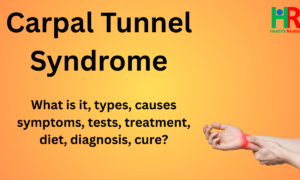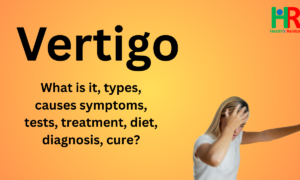
What is Ataxia?
Ataxia is a neurological sign and a condition characterized by a lack of voluntary coordination of muscle movements. It implies a problem with the parts of the nervous system that coordinate movement, primarily the cerebellum, but also potentially involving the spinal cord and peripheral nerves.
Definition of Ataxia?
Ataxia is a neurological disorder characterized by impaired coordination, balance, and precision of voluntary movements. It results from a disruption in the pathways that control movement, most commonly involving the cerebellum.
Types of Ataxia?
· Hereditary Ataxias
· Friedreich’s Ataxia
· Spinocerebellar Ataxias (SCAs)
· Idiopathic Ataxias
· Cerebellar Ataxia
· Sensory Ataxia
· Vestibular Ataxia
· Progressive Ataxias
· Non-Progressive Ataxias
· Episodic Ataxias
· Truncal Ataxia
· Limb Ataxia (Appendicular Ataxia)
Symptoms of Ataxia?
· Movement and Coordination Problems
· Speech Problems (Dysarthria)
· Eye Movement Problems (Nystagmus, Oculomotor Apraxia)
· Swallowing Difficulties (Dysphagia)
· Fatigue
· Muscle Weakness
· Sensory Problems
· Hearing Loss
· Scoliosis
Causes of Ataxia?
· Stroke or TIA: Damage to the cerebellum or brainstem.
· Brain Tumors: Can compress or damage the cerebellum.
· Multiple Sclerosis (MS): Damage to the central nervous system.
· Cerebral Palsy: Brain damage occurring before, during, or shortly after birth.
· Head Trauma: Concussions or severe head injuries.
· Infections: Viral or bacterial infections affecting the brain or spinal cord.
· Toxins: Exposure to heavy metals, solvents, and certain drugs (including alcohol and some medications).
· Nutritional Deficiencies: Lack of vitamin E, B1, or B12.
· Thyroid Conditions: Hypothyroidism and hyperparathyroidism.
· Autoimmune Diseases: Such as celiac disease and sarcoidosis.
· COVID-19: Can rarely lead to ataxia.
· Paraneoplastic Syndromes: Immune responses to cancerous tumors.
Who Can Suffer from Ataxia?
· Children: Primarily through hereditary ataxias or acquired conditions like cerebral palsy, head trauma, or infections.
· Adults: Through a wider range of causes, including hereditary ataxias with later onset, acquired conditions like stroke, MS, tumors, toxins, and idiopathic ataxia.
· The elderly: Who are at higher risk for stroke and may develop certain types of sporadic ataxia.
Diagnostic Tests of Ataxia?
· Medical History and Neurological Examination
· Brain Imaging
· Laboratory Tests (Blood and Urine Tests)
· Genetic Testing
· Lumbar Puncture (Spinal Tap)
· Electrophysiological Tests
Stages of Ataxia?
· Early/Mild Ataxia
· Moderate Ataxia
· Severe Ataxia
· Late-Stage Ataxia
Treatment of Ataxia?
· Addressing the Underlying Cause (for Acquired Ataxias)
· Symptom Management and Supportive Therapies
· Lifestyle Modifications and Home Care
Best Diet for Ataxia?
· Whole Foods
· Antioxidant-Rich Foods
· Healthy Fats
· Lean Protein
· Fiber
Prevention of Ataxia?
· Preventing Stroke and TIA
· Preventing Head Trauma
· Preventing Infections
· Avoiding Toxin Exposure
· Preventing Nutritional Deficiencies
· Managing Autoimmune Diseases
· Preventing Thyroid Disorders
Overall Survival Rate of Ataxia?
· Stroke-related ataxia
· Ataxia due to treatable conditions (e.g., vitamin deficiencies, thyroid disorders, infections)
· Ataxia due to progressive conditions (e.g., Multiple Sclerosis, brain tumors, paraneoplastic syndromes)
· Alcohol or drug-induced ataxia
Which Doctor Treats Ataxia?
Neurologist
Diseases Associated with Ataxia?
· Friedreich’s Ataxia: The most common hereditary ataxia, affecting the cerebellum, spinal cord, and peripheral nerves.
· Spinocerebellar Ataxias (SCAs): A large group of over 40 types, each with a specific genetic cause and varying symptoms.
· Ataxia-Telangiectasia: A rare childhood disease affecting the brain, immune system, and causing characteristic telangiectasias (small red “spider” veins).
· Episodic Ataxias (EA): Characterized by intermittent attacks of ataxia.
· Congenital Cerebellar Ataxias: Ataxia present from birth due to cerebellar damage or malformation.
· Wilson’s Disease: A genetic disorder causing copper buildup in the brain and liver.
· Ataxia with Oculomotor Apraxia (AOA1 & AOA2) * Dentatorubral Pallidoluysian Atrophy (DRPLA)



